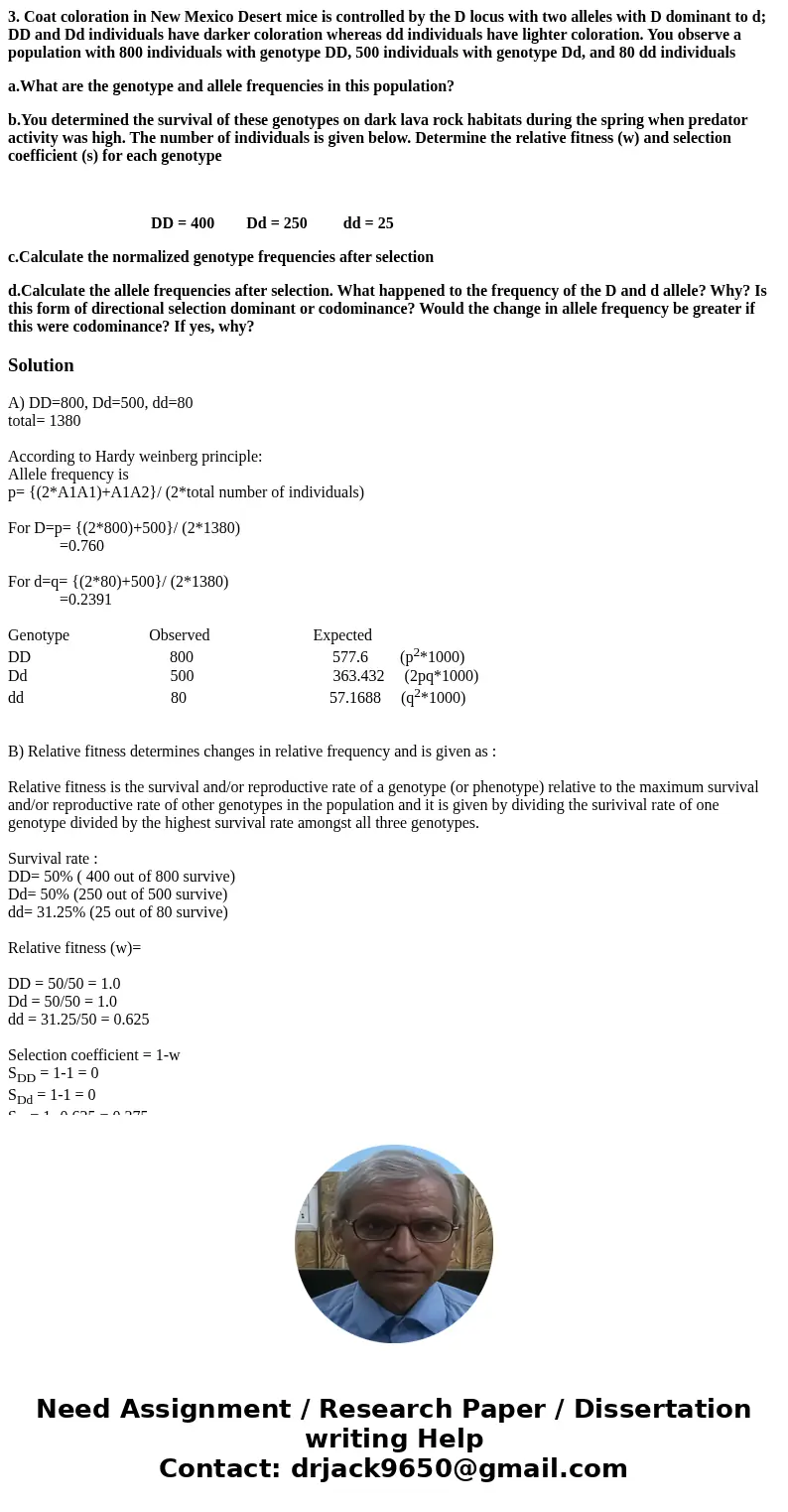3 Coat coloration in New Mexico Desert mice is controlled by
3. Coat coloration in New Mexico Desert mice is controlled by the D locus with two alleles with D dominant to d; DD and Dd individuals have darker coloration whereas dd individuals have lighter coloration. You observe a population with 800 individuals with genotype DD, 500 individuals with genotype Dd, and 80 dd individuals
a.What are the genotype and allele frequencies in this population?
b.You determined the survival of these genotypes on dark lava rock habitats during the spring when predator activity was high. The number of individuals is given below. Determine the relative fitness (w) and selection coefficient (s) for each genotype
DD = 400 Dd = 250 dd = 25
c.Calculate the normalized genotype frequencies after selection
d.Calculate the allele frequencies after selection. What happened to the frequency of the D and d allele? Why? Is this form of directional selection dominant or codominance? Would the change in allele frequency be greater if this were codominance? If yes, why?
Solution
A) DD=800, Dd=500, dd=80
total= 1380
According to Hardy weinberg principle:
Allele frequency is
p= {(2*A1A1)+A1A2}/ (2*total number of individuals)
For D=p= {(2*800)+500}/ (2*1380)
=0.760
For d=q= {(2*80)+500}/ (2*1380)
=0.2391
Genotype Observed Expected
DD 800 577.6 (p2*1000)
Dd 500 363.432 (2pq*1000)
dd 80 57.1688 (q2*1000)
B) Relative fitness determines changes in relative frequency and is given as :
Relative fitness is the survival and/or reproductive rate of a genotype (or phenotype) relative to the maximum survival and/or reproductive rate of other genotypes in the population and it is given by dividing the surivival rate of one genotype divided by the highest survival rate amongst all three genotypes.
Survival rate :
DD= 50% ( 400 out of 800 survive)
Dd= 50% (250 out of 500 survive)
dd= 31.25% (25 out of 80 survive)
Relative fitness (w)=
DD = 50/50 = 1.0
Dd = 50/50 = 1.0
dd = 31.25/50 = 0.625
Selection coefficient = 1-w
SDD = 1-1 = 0
SDd = 1-1 = 0
Sdd= 1- 0.625 = 0.375
D) DD=400, Dd=250, dd=25
Allele frequency after slection
For D=p= {(2*400)+250}/ (2*675)
=0.7777
For d=q= {(2*25)+250}/ (2*675)
=0.2222
There is not much change in allele frequencies of D as it changed from 0.76 to 0.77, which shows dominance in selection. The change in allele frequency for d is from 0.2391 to 0.2222.
C) Genotype frequencies after selection=
Genotype Observed Expected
DD 400 592.9 (p2*1000)
Dd 250 338.8 (2pq*1000)
dd 25 48.4 (q2*1000)


 Homework Sourse
Homework Sourse